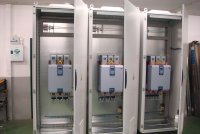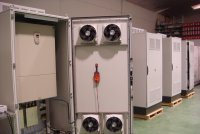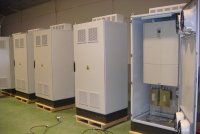The second largest country in Africa after Sudan, Algeria has 33 million inhabitants and water is extremely scarce. The Sahara desert, the largest in the world, covers more than 90% of the national territory. Among the many consequences is the fact that the country has a very restricted area for cultivation and has to import more than half the amount of grains for consumption. Unfortunately, the situation is likely to worsen. Estimates show that in 30 years the amount of water available per person in the north of Africa will be reduced to 80%.
Due to this, the government of Algeria is making investments on a plan of seawater desalination. This includes the construction of three large desalination plants with production capacity of 400 cubic meters of water per day which will greatly benefit a population of over 2 million. Two units have already been concluded and the third is now being installed. The Tlemcem-Honaine plant, located near the city of Oran, close to the border with Morocco, has a production capacity of 150 thousand cubic meters and will attend to 750 thousand inhabitants directly. It’ll be one of the largest in the world.
The construction project was developed by the Spanish companies Befesa (Abengoa) and Sadyt (Sacyr-Vallehermoso) operating under the GEIDA consortium. Together with AEC - Algerian Electrical Company, they integrate MBH, a kind of business licensee responsible for the project, construction and exploration of the desalination plant for the next 25 years. The project counts on suppliers from several countries.
WEG will supply 17 Soft Starters and 10 frequency inverters for the pumps that will withdraw water from the Mediterranean Sea at Honaine. The deal was closed by WEG Iberia, Spain, through its distributor Flomitec, a company specialized in Drives & Controls for electric motors. The electrical panel assembly company was Electricidad Tebar who specializes in assembly of electrical panels in water sector infrastructures. The equipment has already been delivered to the Algerian Energy Company. They will provide soft starting and speed variation for pumps which will result in higher efficiency.
The construction began in the first semester of 2008 and will be concluded in 2010. The investment in the three plants was of US$ 400 m. In an interview to the Algérie Presse Service, the Minister delegate to the State Minister of Interior and Local Communities of Algeria, Daho Ould Kablia informed that the country will apply US$ 19 billion in the hydric sector up to 2014 with the purpose of expanding the supply per person to 165 liters per day. Today, this number is 123 liters per day. In Brazil, the volume is of 300 liters per day. Besides the desalination plants, the resources will also be used in the construction of dams and for sanitation. According to Daho Ould Kablia, “with the new program, the Algerian government intends to find a balance between the different regions of the country and provide a fair supply and distribution of water and the services related to it.”
Desalination
Fresh water is scarce in the world. Although two thirds of the planet is made up of water, only around 3% is fresh water suitable for consumption, irrigation or for use in industries. On the other hand, there’s plenty of seawater. For many countries, the only thing to do is to make large investments in technology to desalinate water and use the liquid for consumption.
There are approximately 14,4 thousand desalination plants worldwide, most of them in the Middle East. According to data from the International Desalination Association, they produce today over 59,9 billion liters of water per day.
The desalination of water happens through a process known as Reverse Osmosis. High pressure pumps draw the solution making it pass through semi-permeable membranes which are like filters. The salt is retained in these membranes and what comes out on the other side is a “pure” solution.
Sources:
www.webciencia.com
www.wikipedia.com
www.brasilescola.com
www.anba.com.br








